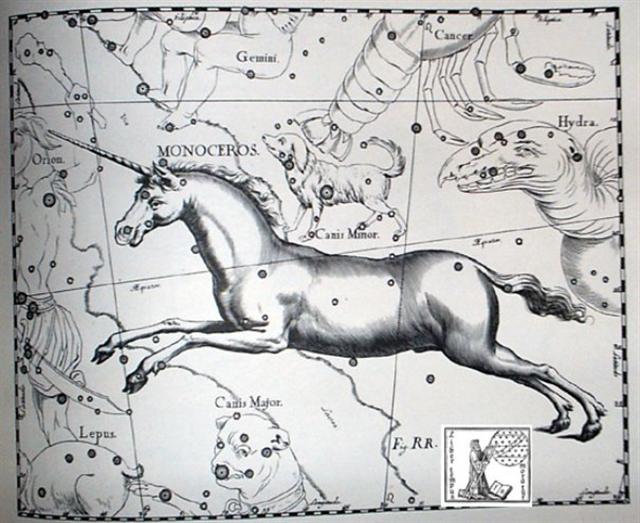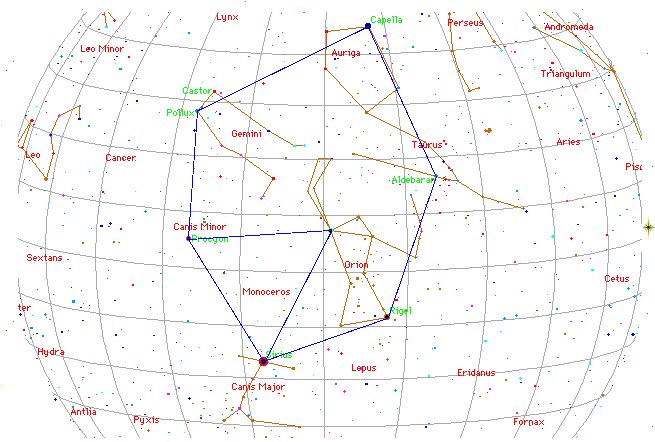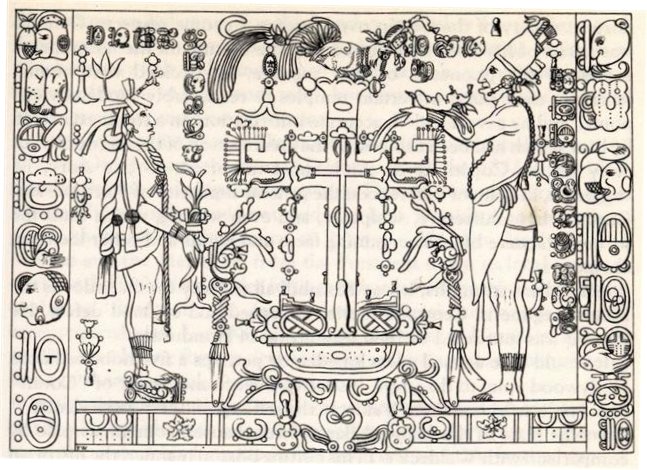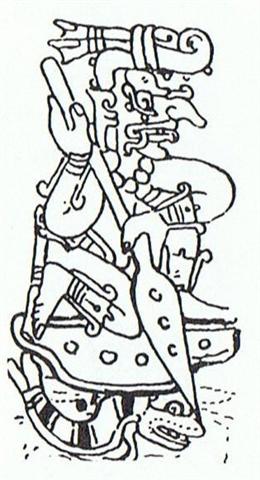13-1. Glyph line Eb3
continues for a week beyond Eb3-31 (100), which means the last
glyph in the line will be number 107, which was 7 days after the
Head of Pollux (β Gemini)
and 10 days after the Head of Castor:
... The Celtic year was divided into two halves with the second
half beginning in July, apparently after a seven-day wake, or
funeral feast, in the oak-king's honour
...


 |
 |
 |
 |
 |
 |
 |
 |
|
Eb3-32 |
Eb3-33 |
Eb3-34 |
Eb3-35 (104) |
Eb3-36 |
Eb3-37 |
Eb3-38 |
Eb4-1 (108) |
|
te
maitaki |
te
tagata moko |
te
henua |
te
maitaki |
tagata moko |
te
henua |
Te
maitaki |
te
henua - te
kiore |
|
Moko.
1. Lizard; moko manu uru,
figurine of a
lizard (made of wood). 2. To throw oneself on
something, to take quickly, to snatch; to flee into
the depths (of fish); tagata moko,
interloper, intruder, someone who seizes something
quickly and swiftly, or cleverly intrudes somewhere;
ka-moko ki te kai, ka-moko, ka-aaru, quickly
grab some food, grab and catch. 3. To throw oneself
upon someone, to attack: he-moko, he-reirei,
to attack and kick. 4. Moko roa: to make a
long line (of plantation); moko poto, to make
a short line. 5. Ihu moko; to die out (a
family of which remains only one male without sons);
koro hakamao te mate o te mahigo, he-toe e-tahi
tagata nó, ina aana hakaara, koîa te me'e e-kî-nei:
ku-moko-á te ihu o te mahigo. when the members
of family have died and there remains only one man
who has no offspring, we say: ku-moko-á te ihu o
te mahigo; to disappear (of a tradition, a
custom), me'e ihu moko o te tagata o te kaiga
nei, he êi, the êi is a custom no longer
in use among the people of this island. Vanaga. 1.
Lizard. P Pau., Mgv., Mq.: moko, id. Ta.
moó, id. 2. To stun, to be dizzy. PS Sa.:
mo'o, to be surprised. Hakamoko, to
accomplish. Mokohi, grain, full-grown berry (mokoi);
mokohi haraoa, grain. Mgv.: mokohe,
food. Mokoimokoi, heart T, kidney.
Mokomoko, sharp, pointed, slender, cape,
headland; gutu mokomoko, pointed lips.
Churchill. Mgv.: mokora, a duck. Ta.:
moora, id. Churchill.

... Maui
at first assumed the form of a kiore, or rat,
to enter the body of Hine. But tataeko,
the little whitehead, said he would never succeed in
that form. So he took the form of a toke, or
earth-worm. But tiwaiwaka the fantail, who
did not like worms, was against this. So Maui
turned himself into a moko huruhuru, a kind
of caterpillar that glistens. It was agreed that
this looked best, and so Maui started forth,
with comical movements. The little birds now did
their best to comply with Maui's wish. They
sat as still as they could, and held their beaks
shut tight, and tried not to laugh. But it was
impossible. It was the way Maui went in that
gave them the giggles, and in a moment little
tiwaiwaka the fantail could no longer contain
himself. He laughed out loud, with his merry, cheeky
note, and danced about with delight, his tail
flickering and his beak snapping. Hine nui
awoke with a start. She realised what was happening,
and in a moment it was all over with Maui. By
the way of rebirth he met his end ... ...
The Hawaiians also called the Milky Way Kuamoo,
Backbone of the Lizard. Many Polynesian names for
the Milky Way may be reminiscent of the crocodiles
of Western Melanesia, the moko-roa, 'long
lizards' of legend, for the same motif is found in
various parts of the Pacific. The Tuamotuans termed
the Milky Way Vaero-o-te-moko, Tail of the
Lizard, and Mango-roa, Long Shark. The
Mangaian name Moko-roa-i-ata,
Long-lizard-of-morning, not only sounds the lizard
or crocodile note but also refers to the method of
determining the small hours of the night before the
rising of the morning star. The Maori used the same
term contracted to Mokoroiata. Again they
called the Galaxy Mango-roa, Long
Shark, and Mangoroiata, Long-shark-of-dawn
...

... A une certaine saison, on
amassait des vivres, on faisait fête On emmaillotait
un corail, pierre de défunt lezard, on l'enterrait,
tanu. Cette cérémonie était un point de
départ pour beacoup d'affaires, notamment de
vacances pour le chant des tablettes ou de la
priére, tanu i te tau moko o tana pure,
enterrer la pierre sépulcrale de lézard de sa prière
... |
|
VISIBLE CLOSE TO THE FULL MOON: |
|
July 16 |
17 |
18 |
19 |
20 (*121) |
21 |
22 |
23 (204) |
When
Metoro suddenly changed the time order at glyph number 108 it could be because he connected this place with the last
day of the preceding old year.
326 (side a) + 108 (side b) - 80
(Gregorian 0h) = 354 = 12 * 29½.
|
 |
 |
 |
 |
 |
 |
|
Eb3-26 |
Eb3-27 (96) |
Eb3-28 |
Eb3-29 |
Eb3-30 |
Eb3-31 (100) |
|
tagata - e
Tapamea |
ka
pipiri to
ihe |
te
kiore - te
henua |
e
rakau tapamea |
kua tua -
te tino |
kiore - te
henua |
|
Piri.
1. To join (vi, vt); to meet
someone on the road; piriga,
meeting, gathering. 2. To choke:
he-piri te gao. 3. Ka-piri, ka
piri, exclamation: 'So many!'
Ka-piri, kapiri te pipi, so many
shellfish! Also used to welcome
visitors: ka-piri, ka-piri! 4.
Ai-ka-piri ta'a me'e ma'a,
expression used to someone from whom one
hopes to receive some news, like saying
'let's hear what news you bring'. 5.
Kai piri, kai piri, exclamation
expressing: 'such a thing had never
happened to me before'. Kai piri, kai
piri, ia anirá i-piri-mai-ai te me'e
rakerake, such a bad thing had never
happened to me before! Piripiri,
a slug found on the coast, blackish,
which secretes a sticky liquid. Piriu,
a tattoo made on the back of the hand.
Vanaga. 1. With, and. 2. A shock, blow.
3. To stick close to, to apply oneself,
starch; pipiri, to stick, glue,
gum; hakapiri, plaster, to
solder; hakapipiri, to glue, to
gum, to coat, to fasten with a seal;
hakapipirihaga, glue. 4. To
frequent, to join, to meet, to
interview, to contribute, to unite, to
be associated, neighboring; piri mai,
to come, to assemble, a company, in a
body, two together, in mass,
indistinctly; piri ohorua, a
couple; piri putuputu, to
frequent; piri mai piri atu,
sodomy; piri iho, to be addicted
to; pipiri, to catch; hakapiri,
to join together, aggregate, adjust,
apply, associate, equalize, graft, vise,
join, league, patch, unite. Piria;
tagata piria, traitor. Piriaro
(piri 3 - aro), singlet,
undershirt. Pirihaga, to ally,
affinity, league. Piripou (piri
3 - pou), trousers. Piriukona,
tattooing on the hands. Churchill.
Rakau.
Raau, medicine, remedy, drug.
Ra'a'u, scratch on the skin.
Rakau, a plant. Râkau, goods,
property. Vanaga. 1. Wood; rakau ta,
cudgel, stick. P Pau.: rakau,
tree, to dress a wound. Mgv.: rakau,
wood, timber, a tree; medicine, a
remedy; an object. Mq.: ákau,
wood, tree. Ta.: raáu, id. 2.
Medicine, remedy, potion, ointment,
furniture, any precious object,
resources, baggage, riches, heritage,
dowry, merchandise, treasure, wealth;
rakau hakaneinei, purgative;
rakau nui, rich, opulent; rakau
kore, poor, beggar, indigent,
miserable, an inferior; hakakamikami
ki te rakau, to impoverish; rakau
o te miro, ballast. Mq.: akau,
anything in general. The medicine sense
is particularized in Tonga, Nukuoro,
Hawaii, Tahiti, Mangareva, Paumotu. In
no other speech does wood stand so fully
for wealth of possessions, but it will
be recalled that Rapanui is
destitute of timber and depends wholly
upon driftwood. Churchill.
Tino.
1. Belly (as reported by a
Spaniard in 1770). 2. Genitalia (modern
usage). 3. Trunk (of a tree), keel (of a
boat); tino maîka, banana trunk;
tino vaka, keel. Vanaga. Body,
matter; mea tino, material;
tino kore, incorporeal. P Pau.:
tino, a matter, a subject. Mgv.:
tino, the body, trunk. Mq.: tino,
nino, the body. Ta.: tino,
id. Churchill.
|
 |
*15 |
 |
|
kua tuo te tino |
kua tua - te tino |
|
Eb3-15 (84) |
July 14 (195) |
Tuo.
Mgv.: tuo, to
speak long without an answer. Ta.:
tuo, to cry out loudly. Ha.:
kuo, to cry with a loud
voice. Churchill
|
|
VISIBLE CLOSE TO THE FULL MOON: |
|
July 10 |
11 |
12 (193) |
13 |
14 |
15 (196) |
 |
|
ALUDRA (Virgin) =
η
Canis Majoris
(111.1),
PROPUS = ι
Gemini (111.4),
GOMEISA (Water-eyed) = β Canis Minoris
(111.6)
*70.0 = *111.4 - *41.4 |
ρ Gemini
(112.1),
Eskimo Nebula
= NGC2392 Gemini
(112.2)
ANTARES (α Scorpii) |
Al Dhirā'-5 (Forearm)
/
Punarvasu-7 (The Two Restorers of Goods)
/
Mash-mashu-Mahrū-10 (Western One of the Twins)
CASTOR (Beaver) = α Gemini (113.4)
*113.4 = *41.4 + *72.0 |
ANA-TAHUA-VAHINE-O-TOA-TE-MANAVA-7
(Pillar for Elocution)
υ Gemini (114.0),
MARKAB PUPPIS = κ Puppis
(114.7), ο Gemini (114.8),
PROCYON = α Canis Minoris
(114.9) |
α
Monocerotis (115.4), σ Gemini (115.7)
*74.0 = *115.4 - *41.4 |
Mash-mashu-arkū-11 (Eastern One of the Twins)
κ Gemini (116.1),
POLLUX = β Gemini
(116.2), π Gemini (116.9) |
|
... In Hindu legend
there was a mother goddess called Aditi, who had
seven offspring. She is called 'Mother of the Gods'.
Aditi, whose name means 'free, unbounded, infinity'
was assigned in the ancient lists of constellations as
the regent of the asterism Punarvasu.
Punarvasu is dual in form and means 'The Doublegood
Pair'. The singular form of this noun is used to refer
to the star Pollux. It is not difficult to surmise that
the other member of the Doublegood Pair was Castor. Then
the constellation Punarvasu is quite equivalent
to our Gemini, the Twins. In far antiquity (5800 B.C.)
the spring equinoctial point was predicted by the
heliacal rising of the Twins ...
 |
The pair of restorers of goods (the Gemini twins) once upon
a time had marked the place where the Sun reached the
northern spring equionx *113 - *88 = 25 right ascension days after
the Armpit of Orion (Betelgeuze). The armpit signified
'warming up' (i.e. here restoring the summer with all its goods). The
Hindu asterism 'Doublegood Pair' (Punarvasu) ought to be
translated into Erua Maitaki:
 |
 |
 |
 |
 |
 |
|
4h (60.9) |
< < < < |
May 22 |
23 |
24 (12 * 12) |
AIN (*65.7) |
|
Ca9-15 (3 * 81) |
Ca9-16 (244) |
Ca9-17 |
Ca9-18 |
Ca9-19 |
Ca9-20 |
|
i te mauga pu hia |
E rima ki te henua |
koia ku honui |
erua maitaki |
ko koe ra |
|
Maitaki, Clean, neat, pure,
pretty, nice, beautiful, handsome; tagata rima
maitaki, clean-handed man, correct man.
Vanaga. 1. Good. Henua maitaki = the good
earth. 2. Shine. Marama maitaki = the shining
moon. Barthel. Ce qui est bon. Jaussen according to
Barthel. Meitaki, good, agreeable,
efficacious, excellent, elegant, pious, valid,
brilliant, security, to please, to approve (maitaki);
ariga meitaki, handsome, of pleasant mien;
mea meitaki ka rava, to deserve; meitaki ke,
marvelous, better. Hakameitaki, to make good,
to amend, to do good, to bless, to establish.
Meitakihaga, goodness. PS Pau.: maitaki,
good. Mgv.: meitetaki, beautiful, good. Mq.:
meitai, good, agreeable, fit, wise, virtuous.
Ta.: maitaiki, good, well. Niuē:
mitaki,
good. Maitakia,
clean. Churchill. |
... Hamiora Pio once spoke as
follows to the writer: 'Friend! Let me tell of the offspring
of Tangaroa-akiukiu, whose two daughters were
Hine-raumati (the Summer Maid - personified form of
summer) and Hine-takurua (the Winter Maid -
personification of winter), both of whom where taken to wife
by the sun ... Now, these women had different homes.
Hine-takurua lived with her elder Tangaroa (a sea
being - origin and personified form of fish). Her labours
were connected with Tangaroa - that is, with fish.
Hine-raumati dwelt on land, where she cultivated food
products, and attended to the taking of game and forest
products, all such things connected with Tane
...
... A very
detailed myth comes from the island of Nauru. In the
beginning there was nothing but the sea, and above soared
the Old-Spider. One day the Old-Spider found a giant clam,
took it up, and tried to find if this object had any
opening, but could find none. She tapped on it, and as it
sounded hollow, she decided it was empty. By repeating a
charm, she opened the two shells and slipped inside. She
could see nothing, because the sun and the moon did not then
exist; and then, she could not stand up because there was
not enough room in the shellfish. Constantly hunting about
she at last found a snail. To endow it with power she placed
it under her arm, lay down and slept for three days. Then
she let it free, and still hunting about she found another
snail bigger than the first one, and treated it in the same
way. Then she said to the first snail: 'Can you open this
room a little, so that we can sit down?' The snail said it
could, and opened the shell a little. Old-Spider then took
the snail, placed it in the west of the shell, and made it
into the moon. Then there was a little light, which allowed
Old-Spider to see a big worm. At her request he opened the
shell a little wider, and from the body of the worm flowed a
salted sweat which collected in the lower half-shell and
became the sea. Then he raised the upper half-shell very
high, and it became the sky. Rigi, the worm,
exhausted by this great effort, then died. Old-Spider then
made the sun from the second snail, and placed it beside the
lower half-shell, which became the earth ...
|
Schedir
(*8) |
Night of
culmination |
|
(80 + RA
/ 24h * 365¼) |
233 |
| Nov
18 (322) |
March 29
(88) |
|
365 - 235
= 130 |
|
Betelgeuze (*88) |
Night of
culmination |
138 |
(80 + RA
/ 24h * 365¼) |
225 |
|
Jan 29
(121 + 3 * 91 = 419 - 25) |
June 17
(168 → 88 + 80) |
|
365 days
= 20 weeks + 15 * 15 days |
|
Castor (*113
→ 88 + 25) |
Night of
culmination |
138 |
(80 + RA
/ 24h * 365¼) |
225 |
|
Febr 23
(419) →
Terminalia |
July 12
(200
- 7) |
|
365 days
= 20 weeks + 15 * 15 days |
|
Thuban (*212) |
Night of
culmination |
133 |
(80 + RA
/ 24h * 365¼) |
230 |
|
June 7
(168 - 10) |
Oct 19
(292) |
|
135 + 230
= 365 days |
|
Zuben
Elgenubi (*224) |
Night of
culmination |
135 |
(80 + RA
/ 24h * 365¼) |
228 |
|
June 17
(168 → 204 - 36) |
Oct 31
(304) |
|
137 + 228
= 365 days |
|
Ras
Algethi (*260) |
Night of
culmination |
135 |
(80 + RA
/ 24h * 365¼) |
228 |
|
July 23
(204
→
158 + 46) |
Dec 6
(340 → 292 + 48) |
|
137 + 228
= 365 days |
|
Menkar |
Night of
culmination |
133 |
(80 + RA
/ 24h * 365¼) |
230 |
|
Dec 21
(355) |
May
4 (124) |
|
135 + 230
= 365 days |
|
Atlas |
Night of
culmination |
135 |
(80 + RA
/ 24h * 365¼) |
228 |
|
Dec 31
(365) |
May 16
(136) |
|
365 - 136
= 229 |
To restore the health of Mother Earth, after the
dark winter season when people were starving, it was
necessary to push up the sky:
... Antares, visible in the morning sky
of December-January, came to stand for summer heat; hence
the saying, 'Rehua cooks (ripens) all fruit'. The
generally accepted version of the Rehua myth,
according to Best, is that Rehua had two wives, the
stars on either side of Antares. One was Ruhi-te-rangi
or Pekehawani, the personification of summer languor
(ruhi), the other Whaka-onge-kai,
She-who-makes-food-scarce before the new crops can be
harvested ...
... Sky (rangi) and Earth (papa)
lay in primal embrace, and in the cramped, dark space
between them procreated and gave birth to the gods such as
Tane, Rongo and Tu. Just as children
fought sleep in the stifling darkness of a hare paenga,
the gods grew restless between their parents and longed for
light and air. The herculean achievement of forcing Sky to
separate from Earth was variously performed by Tane
in New Zealand and the Society Islands, by Tonofiti
in the Marquesas and by Ru (Tu) in Cook
Islands. After the sky was raised high above the earth,
props or poles were erected between them and light entered,
dispelling the darkness and bringing renewed life. One
detail which is iconographically of interest is whether the
god responsible for separating Earth and Sky did so by
raising the Sky with his upraised arms and hands, as in
Tahiti and elsewhere, or with his feet as in New Zealand
...
... It must be admitted, however, that the task of raising
the sky was not always a long and arduous one. In the New
Hebrides of Melanesia the sky was formerly so low overhead
that a woman who was pounding roots in a mortar happened to
strike the sky with her pestle.
Greatly annoyed at the interruption she looked up and cried
angrily, 'Go on up higher!' Whereat the sky meekly obeyed
her. What actually happened probably was that the woman
struck the low house roof with her pestle and cried angrily
to her husband, 'If you don't raise that roof higher, I
won't cook you another meal!' thus giving a strong impuls to
the development of the science of architecture ...
In this view of the world the 'medicin' (rakau) for
overcoming the infertile winter season was
the cosmic tree (rakau):


... The ancient Chinese believed that with the arrival of
the dry season the earth and sky ceased to communicate. The
Spirit of drought was personified by a little bald woman
with eyes at the top of her head. While she was present, the
sky refrained from sending rain, so as not to harm her.Hills
and rivers are the first to suffer from drought. It deprives
hills of their trees, i.e. their hair, and rivers of their
fish, which are their people. The same word, wang,
means mad, deceitful, lame, hunchbacked, bald and Spirit of
drought ...
|

HEZE (*205.0) |
1 |
|
1 |
9 |
22 |
|
8-petal flower |
bald
princess |
oar |
|
 |
 |
 |
|
1 |
2 |
3 |
|
... The ancient
Chinese believed that with the arrival of the dry
season the earth and sky ceased to communicate.
The Spirit of drought was
personified by a little bald woman with eyes at the
top of her head. While she was present, the sky
refrained from sending rain, so as not to harm
her.Hills and rivers are the first to suffer from
drought. It deprives hills of their trees, i.e.
their hair, and rivers of their fish, which are
their people. The same word, wang, means mad,
deceitful, lame, hunchbacked, bald and Spirit of
drought ... |
|
Ea5-17 (261 - 108) |
POLARIS |
SHERATAN |
Ea5-20 (156) |
|
*313 - *108 =
*205 |
*206 = *26 + *200 |
*207 |
BENETNASH |
|
Oct
12 (205) |
13 |
14 |
(288 = 156 + 182
- 50) |
|
April 15 (285 +
185) |
16 (471 → 1½ * 314) |
17 (472 → 365 +
107) |
18 (108
→
288 - 180) |

According to Metoro the
place for restoring health began at heliacal Procyon
(July 13, 194), i.e. at the 7th Tahitian star pillar (ana). We can here (Eb3-29) interpret the front part of the glyph as alluding to the 'Living Wood' (Te
Oraora-miro), from where the greenery
would reemerge:
 |
*9 |
 |
|
MAY 1 |
July 13 |
|
Eb3-20 |
Eb3-29 |
|
MULIPHEIN |
PROCYON |
:..
The canoe which transported the first exploratory voyage to
Rapa Nui was said to have been called The Living
Wood, a reference to Tane ...

|


















